#Coal Mining Industry Reports
Text
The Challenges of the Coal Mining Market
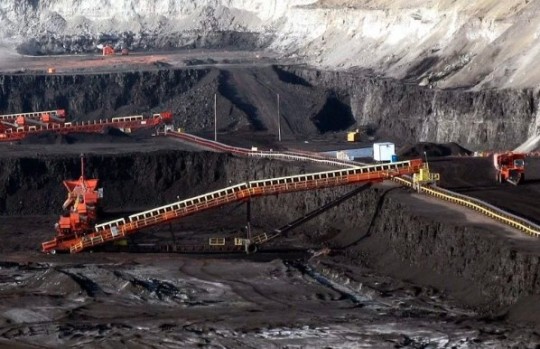
The Coal Mining Industry has been a fundamental pillar of global energy production for centuries, powering economies, fueling industries, and providing livelihoods to millions. However, in recent years, the industry has encountered numerous challenges that have tested its resilience and viability. In this blog, we'll delve into some of the key challenges facing the coal mining market and explore potential solutions to address them.
Environmental Concerns:
Perhaps the most prominent challenge facing the coal mining industry is its environmental impact. Coal extraction, processing, and combustion emit greenhouse gases, particulate matter, sulfur dioxide, and other pollutants, contributing to air and water pollution, deforestation, habitat destruction, and climate change. According to the International Energy Agency (IEA), coal-fired power plants are responsible for approximately 30% of global carbon dioxide emissions. As the world strives to reduce its carbon footprint and transition to cleaner energy sources, coal mining companies face mounting pressure to mitigate their environmental impact and adopt sustainable practices.
Regulatory Compliance:
The coal mining industry operates in a heavily regulated environment, subject to stringent environmental, health, and safety regulations imposed by governments and regulatory bodies worldwide. Compliance with these regulations entails substantial costs, including investments in pollution control technologies, mine safety measures, land reclamation efforts, and emission reduction initiatives. Failure to comply with regulatory requirements can result in fines, lawsuits, and reputational damage, posing significant challenges to coal mining companies' financial viability and operational sustainability.
Market Volatility:
The coal mining market is inherently volatile, susceptible to fluctuations in supply and demand, geopolitical tensions, economic conditions, and energy market dynamics. Changes in government policies, technological advancements, and shifts in consumer preferences also influence coal prices and market trends. Volatility in coal prices can affect the profitability of coal mining operations, disrupt investment plans, and create uncertainties for industry stakeholders. Moreover, competition from alternative energy sources, such as natural gas, renewables, and nuclear power, further exacerbates market volatility and challenges the long-term viability of coal as an energy source.
Declining Demand and Market Shifts:
The coal mining industry is facing declining demand for coal, driven by several factors, including the growing adoption of renewable energy sources, energy efficiency measures, and environmental regulations aimed at reducing greenhouse gas emissions. As countries strive to meet their climate goals under the Paris Agreement and transition to low-carbon economies, the demand for coal is expected to continue declining, particularly in developed nations. This shift in energy consumption patterns poses significant challenges to coal mining companies, necessitating diversification strategies and adaptation to changing market conditions.
Social Impacts and Community Relations:
Coal mining operations often have profound social impacts on local communities, including disruptions to land use, displacement of indigenous peoples, health and safety risks for workers, and socio-economic inequalities. Community opposition to coal mining projects, driven by concerns over environmental degradation, health hazards, and loss of livelihoods, can hinder project approvals, delay development timelines, and escalate project costs. Building and maintaining positive relationships with local communities, engaging in meaningful consultation and dialogue, and addressing socio-economic concerns are essential for mitigating social risks and securing social license to operate.
Conclusion
The Coal Mining Industry faces a myriad of challenges that require proactive and collaborative efforts from industry stakeholders, governments, and civil society to address effectively. Embracing sustainable practices, investing in clean technologies, diversifying energy portfolios, and fostering dialogue and engagement with communities are critical for navigating the challenges and ensuring the long-term viability and sustainability of the coal mining market.
#Coal Mining#Coal Mining Germany#Coal Mining India#Coal Mining Indonesia#Coal Mining Market#Coal Mining Industry#Coal Mining Companies#Global Coal Mining#Coal Mining Industry Reports#Coal Mining Market Growth#Coal Mining Market Size#Coal Mining Market Challenges#Coal Mining Market in India#Coal Mining Market Competitors#Coal Mining Market Outlook#Coal Mining Industry Research Reports#Coal Mining Market Research Reports#Coal Mining Market Major Players#Coal Mining Market Share
0 notes
Text
Exploring the Dynamics of the Coal Mining Market Growth, Market Revenue and Future Outlook

The Coal Mining Market stands as a vital pillar in the global energy landscape, navigating constant evolution and diverse challenges. This exploration delves into the growth, size, demand, challenges, regional nuances, competitive forces, and the future outlook that characterize the intricate terrain of the Coal Mining industry.
Growth Trajectory: Illuminating the Coal Mining Market
Understanding the growth patterns in the Coal Mining Market is pivotal to gauging its economic impact and industry vitality. The industry has witnessed steady growth, driven by increasing global demand for coal as a primary energy source. The key highlights include an annual growth of 5%, indicating sustained demand, and developing economies contributing significantly to this upward trajectory.
Sizing Up: Coal Mining Market Size Analysis
The sheer scale of the Coal Mining Market is instrumental for stakeholders seeking to comprehend its economic footprint and potential opportunities. The market size is substantial, with a valuation of USD 50 billion in the last fiscal year. Variations in market size are influenced by factors such as coal reserves, production capacities, and regional demand.
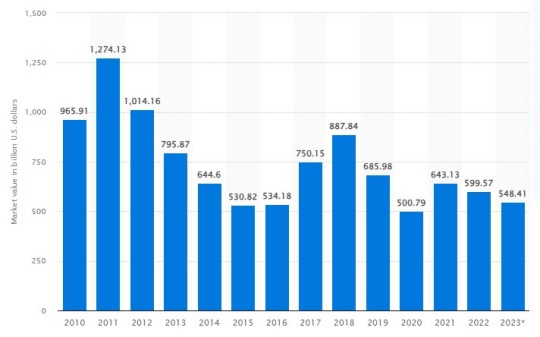
Meeting Demand: Coal Mining Market Demand Dynamics
The Coal Mining Market demand for coal remains a critical driver for the Market, impacting various industries, especially power generation and manufacturing. Despite global efforts to diversify energy sources, coal continues to meet a substantial portion of the world's energy demand.
Navigating Challenges: Coal Mining Market Challenges Unveiled
Challenges inherent in the Coal Mining industry require strategic approaches to ensure sustainable operations and compliance with evolving regulations. Environmental concerns, regulatory complexities, and the emergence of renewable energy sources are among the key challenges faced by the industry.
Regional Dynamics: Focus on Coal Mining Market in India
India plays a pivotal role in the Global Coal Mining Market, with unique dynamics shaping its industry landscape. The Coal Mining Market in India is characterized by extensive coal reserves and a significant contribution to the country's energy mix. Policy initiatives and technological advancements influence the growth trajectory of the Coal Mining Market in India.
Competing Forces: Coal Mining Market Competitors in the Limelight
The competitive landscape involves established industry leaders vying for market share and emerging players seeking to make their mark. Coal Mining Market Competitors engage in strategic alliances and investments in advanced mining technologies.
Future Outlook: Coal Mining Market Forecast and Outlook
The Coal Mining Market future outlook is influenced by global energy transitions, technological advancements, and evolving consumer preferences. The Coal Mining Market Forecast is optimistic, driven by sustained demand from industrial and power generation sectors.
Conclusion
The Coal Mining Market remains a dynamic force in the global energy sector, navigating growth, challenges, and evolving market dynamics. Stakeholders must stay attuned to these dynamics for informed decision-making in this critical industry.
#Coal Mining Industry#Coal Mining Industry Reports#Coal Mining Market Growth#Coal Mining Market Size#Coal Mining Market#Coal Mining Market Demand#Coal Mining Market Challenges#Coal Mining Market in India#Coal Mining Market Value#Global Coal Mining Market#Coal Mining Market Competitors#Coal Mining Market Analysis#Coal Mining Market Forecast#Coal Mining Market Outlook#Coal Mining Industry Research Reports#Coal Mining Market Research Reports#Coal Mining Market Major Players#Coal Mining Market Share
0 notes
Text
#Mining Shovel Market Current Scenario and Industry Growth Forecast with Major Key Players data by 2032#The global mining shovel market is estimated to create an absolute dollar opportunity of over US$ 10 Bn by the end of 2032. The sales of mi#exhibiting growth at 2% to 3% CAGR during the forecast period 2022-2032. Increasing emphasis on the development and introduction of advance#Mining shovels are mostly electric powered#and are primarily utilized for digging and loading earth#and for the extraction of minerals. Mining shovels are utilized in the surface mining of gold#copper#coal#and other commodities across the globe. Mining shovels are available in a wide range of payload capacities all over the world. They are des#Due to the rapid industrialization of emerging economies#particularly China and India#there has been significant growth in the demand for mined resources such as coal#iron ore#etc. Thus#it is anticipated that the demand for mining shovels will increase in the near future.#To Know more@#https://www.futuremarketinsights.com/reports/mining-shovel-market
0 notes
Text
So growing up I heard these kinds of statements: "X number of species goes extinct every year" and "Most species that go extinct are undescribed/undiscovered"
And I could never really picture what that looked like. What species were going extinct? Where? Why? If they're undiscovered, how do we know about it? It's only recently that I've been able to understand.
This is an example:
Since European colonization, 99% of old growth forest in the eastern United States was cut down.
In Eastern Kentucky, the coal industry led to waste and rubble being dumped in valleys, literally burying countless mountain streams in gravel and toxic sludge.
Colonialism and exploitation moved faster than leaf-sketching and bug-collecting European naturalists did. It's very simple, and very sad. When the coal mines polluted the streams, many species of fish that only lived in one specific stream must have gone extinct. When Native Americans were forced off their lands, we can presume that rare plant species found in meadows, canebrakes and oaks savannas dependent on particular anthropogenic disturbances went extinct. When old-growth tracts were logged, God only knows how many lichens, mosses, ferns and plants went extinct because the trees they lived on were chopped.
We can extrapolate from the diversity in the fragments that remain, and the number of rare endemic species in especially isolated areas, and guess what probably existed in areas that were obliterated early on.
Keep in mind: All is not lost. New species are still being discovered.
The Bluegrass region of Kentucky was once called one of the most peculiar plant communities of the South—an eastern island of oak savanna with an understory of Arundinaria bamboo and legumes. Early European settlers reported that the ground was incredibly rich and covered with knee-high clover and dense thickets of "cane" (bamboo) that made navigation next to impossible.
Some people say the Bluegrass was always a forest and the savanna theory is wrong. Bullshit! I know this because of several reasons:
The earliest records don't mention any sycamores at all in the Bluegrass, whereas river cane (bamboo) was everywhere. Arundinaria bamboos are fire dependent species, whereas sycamore is HIGHLY intolerant of fire. From this we can infer that the area had a history of frequent burning.
Everyone in the Bluegrass knows about the Old Trees. In horse and cattle pastures in the Bluegrass region, you will sometimes see gigantic, twisted old oaks, with great spreading crowns. Nowadays you hardly see an oak that properly merits the term "gnarled," but the gnarl of the Old Trees is crazy. Just look up google images for Kentucky tourism and you'll see one of those huge trees in the background of several of the photos, I bet. Hardly anyone consciously thinks about it, but these are pre-colonization trees. And they are all obviously open-grown—their growth habit over the centuries has spread out, rather than grown straight up as in a forest.
Early colonizers' records report big walnut and cherry trees in the area. Most of the old houses in the area are made of walnut wood. Those are mid-successional species—you wouldn't find them dominating in an area that was heavily disturbed regularly and recently, they're trees, but you wouldn't find them in a forest that had been minimally disturbed forest for centuries either. The fact that they got huge suggests that a regular disturbance pattern of the Bluegrass region was abruptly interrupted and mostly ceased.
It was a pretty special place, a savanna environment with a mix of giant twisted oaks, rolling prairie hills and bamboo thickets, with deep sinkholes connecting the surface to subterranean cave ecosystems. In places the limestone bedrock reached the surface, creating limestone glades—unique desert-like habitats with many rare plants including Opuntia cactus.
It was also one of the first ecosystems west of the Appalachians to be destroyed by settlers.
BUT! Just a few years ago, we discovered Trifolium kentuckiense—Kentucky clover. A unique species of clover that has only been found in two spots in Central Kentucky.
This means the Bluegrass species that probably went extinct because their habitat was ignorantly logged, plowed and grazed before they were studied by European science may not be entirely gone.
We have been able to fund exhaustive inventories of potential holdouts for big flashy animals like the ivory-billed woodpecker, but so many people view the place they live as "boring" and thoroughly explored, when there could be surviving plants hanging out just about anywhere.
But...I don't think most people realize how much of the Holocene extinction has already happened. Most of the losses are plants and bugs that you never knew existed in the first place.
I feel like lots of people are anxiously waiting for the mass extinction to "start" hitting, but that's not quite right. European colonization of the globe WAS and *is* the mass extinction (combined with climate change which is very related). It's actively ongoing in the Global South. In eastern North America, the major wave of extinctions hit between 100 and 300 years ago.
I feel so much grief for all that was almost certainly lost forever, but I also recognize that I live in a unique period of time where the future can still be changed, and in particular, the heavily damaged ecosystems of the Southeast can be restored and used to absorb carbon from the atmosphere and provide resilience to the entire globe. And I strongly suspect at least a few mysterious new plants will start popping up once that happens...because a lot of plants stick around in the soil seed bank for a long, long time, and seeds can happen to be preserved by freak accident and then sprout later.
we (researchers, scientists, people who work in this field) will desperately need to consult tribal nations for this though because from my reading into it, we don't know what the fuck we're doing. The most basic things like controlled burns are still struggling to catch on and in some places just, spraying herbicides willy-nilly on invasive plants without understanding what makes them invasive.
1K notes
·
View notes
Text
China: Carmakers Implicated in Uyghur Forced Labor
BYD, GM, Tesla, Toyota, VW Risk Using Tainted Aluminum
Global carmakers, including General Motors, Tesla, BYD, Toyota, and Volkswagen, are failing to minimize the risk of Uyghur forced labor being used in their aluminum supply chains, Human Rights Watch said in a report released today.
The 99-page report, “Asleep at the Wheel: Car Companies’ Complicity in Forced Labor in China,” finds that some carmakers have succumbed to Chinese government pressure to apply weaker human rights and responsible sourcing standards at their Chinese joint ventures than in their global operations, increasing the risk of exposure to forced labor in Xinjiang. Most have done too little to map their aluminum supply chains and identify links to forced labor.
“Car companies simply don’t know the extent of their links to forced labor in Xinjiang in their aluminum supply chains,” said Jim Wormington, senior researcher and advocate for corporate accountability at Human Rights Watch. “Consumers should know their cars might contain materials linked to forced labor or other abuses in Xinjiang.”
The link between Xinjiang, a region in northwestern China, the aluminum industry, and forced labor is the Chinese government-backed labor transfer programs, which coerce Uyghurs and other Turkic Muslims into jobs in Xinjiang and other regions.
Human Rights Watch reviewed online Chinese state media articles, company reports, and government statements and found credible evidence that aluminum producers in Xinjiang are participating in labor transfers. Human Rights Watch also uncovered evidence that fossil fuel companies that supply coal to aluminum producers in Xinjiang have received labor transfer workers at their coal mines. Xinjiang’s aluminum smelters depend on the region’s abundant and highly polluting coal supplies to fuel the energy-intensive process of aluminum production.
In 2023, domestic and foreign manufacturers in China produced and exported more cars than any other country. Since 2017, the Chinese government has committed crimes against humanity in Xinjiang, including arbitrary detention, enforced disappearances, and cultural and religious persecution, and has subjected Uyghurs and other Turkic Muslim communities to forced labor inside and outside Xinjiang.
33 notes
·
View notes
Text


On July 4, 1914 - An explosion demolished the upper stories of an apartment building in East Harlem, killing anarchist Arthur Caron and several colleagues. Caron had been among those who protested the involvement of the Rockefeller family in April's "Ludlow Massacre." It appeared that Caron and his associates were building the bomb meant to kill John D. Rockefeller Jr., when it exploded.
(The Ludlow Massacre occurred April 20, 1914, when Colorado state troops and a private force hired by a Rockefeller-owned coal mining company attacked and destroyed a tent camp of striking miners and their families.)
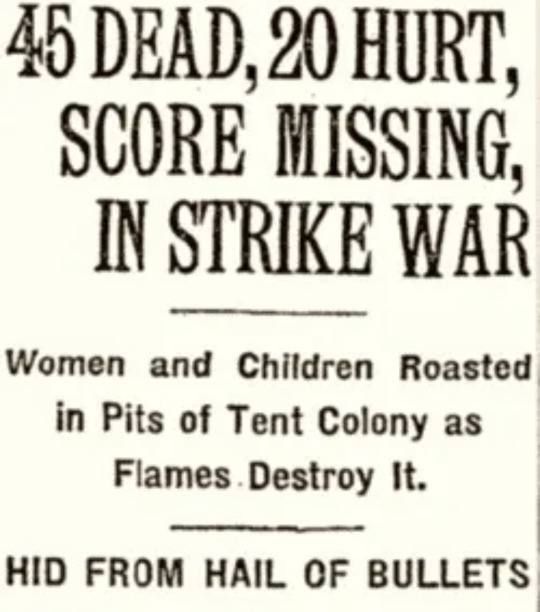
An official report stated that at least twenty-five people - including fourteen children and two women - perished in the massacre. Earlier reporting put the death toll at a minimum of forty-five people, with women and children accounting for thirty of those deaths.


Left: Photograph shows French Canadian anarchist Arthur Caron, a member of the Industrial Workers of the World (IWW), who was killed in the Lexington Avenue bombing of July 4, 1914 in New York City.
Right: Photograph shows members of the Industrial Workers of the World (IWW), who were involved in the Lexington Avenue bombing of July 4, 1914, New York City. Group includes Arthur Caron and Charles Plunkett.


Photograph shows the destruction caused by a bomb at 1626 Lexington Avenue, New York City, which killed four people and injured many others. Anarchist conspirators were making the bomb which they intended to put at John D. Rockefeller's home in Tarrytown, New York.

Above: Baptism record of Joseph Arthur Caron, Beauport, Quebec, Canada, 1883. His father is recorded as a day laborer.
Below: Fall River, Massachusetts marriage record for Arthur Caron and Elmina Reeves, 3July, 1905.

Indexed New York death record information.
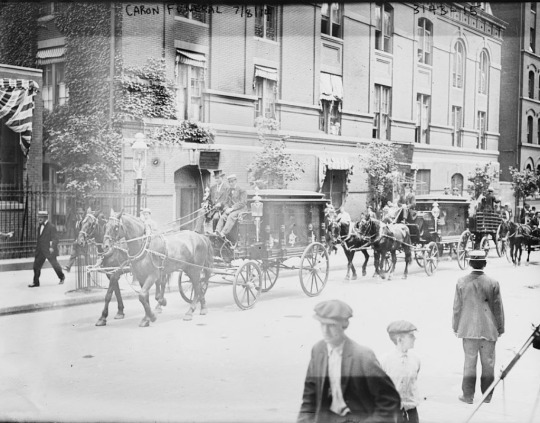
Funeral procession for French Canadian anarchist Arthur Caron, a member of the Industrial Workers of the World (IWW), who was killed in the Lexington Avenue bombing of July 4, 1914 in New York City.
More information:
#arthur caron#anarchist#french canadian#genealogy#family history#true crime#ancestry#anarchism#american politics#ancestors#crime history#family photos#genealogical#family#newspaper#john d. rockefeller#rockefeller#crime#bombing#politics#radical politics#progressive politics#canadian#fall river#new york city#new york#manhatten#anarchy
20 notes
·
View notes
Text



15th February 1817 saw the birth in Glasgow of Robert Angus Smith.
You may not have heard of him, or maybe you read about him in my previous post? Anyway we have all heard of acid rain, defined by National Geographic magazine thus: “Acid rain describes any form of precipitation that contains high levels of nitric and sulfuric acids. It can also occur in the form of snow, fog, and tiny bits of dry material that settle to Earth.”
The words “acid rain” were coined as long ago as 1859 by Angus Smith, who seven years earlier had made the discovery that northern cities across Britain were suffering from rainfall that contained heavy pollutants that were the result of the burning of coal that was rich in sulphur. His research found that the worst-affected city was his home town of Glasgow.
Robert Angus Smith was born in Pollokshaws the seventh son and 12th child of John Smith, originally from Ayrshire, and his wife Janet, daughter of James Thomson who owned a mill at Strathaven in Lanarkshire.
His elder brother John was a big influence on Angus’s life. John eventually became a senior teacher at Perth Academy, and was himself a scientist who would research theories on colour and light. He encouraged his younger brother to read the works of Joseph Priestley, the pioneering English chemist, and Angus Smith was greatly influenced by Priestley’s writings.
He attended Glasgow University from the age of 13, apparently to prepare for a career in the Church of Scotland ministry, but he left without graduating and then became a tutor to families, first in Scotland and then in England. In 1839 he accompanied the Bridgeman family to Germany where he remained to study under the Professor Justus Liebeg, gaining his PhD in 1841.
On returning to England he took a post at Manchester Royal Institution as assistant to Lyon Playfair, an Indian-born Scot and a scientist and politician.
Playfair passed on his own interest in the sanitation of towns and cities to Angus Smith, who left the Institution to set up in business as an analytical chemist. As concern grew about pollution, his services were in demand, and in one famous experiment he waited until a crowded room had emptied then collected the residue on windows to prove that human breath exuded not just carbon dioxide but organic matter dangerous to health.
Smith once graphically described the effects of Manchester’s polluted atmosphere, in a letter to the Manchester Guardian published on November 2, 1844.
He wrote: “Coming in from the country last week on a beautiful morning, when the air was unusually clear and fresh, I was surprised to find Manchester was enjoying the atmosphere of a dark December day… Those who would defend such evils, who would remain careless as long as any probable cause is unremoved, must surely be devoid not only of mercy, but of clear perception and of good taste. The gloominess of uncleanness is everywhere around us.”
In 1851 he began the research that would make him the “father of acid rain” as he is often known. Smith proved that sulphur compounds in the air of towns and cities were the result of burning coal and coke transported in air and rainwater, and even as the industrial revolution was bringing more and more factories into being, Smith was arguing that manufacturers should be held responsible for their pollution.
He investigated poor housing and water quality, and published numerous papers that formed the basis of the developing science of environmental chemistry. One report on the problems of pollution for the Royal Mines Commission was particularly devastating in its scientific indictment of the polluters.
Smith was called as an expert witness in a court case over factory and mine pollution and his testimony was convincing. Consequently when the British Government decided to legislate – in the Alkali Act of 1863 – to try and cut pollution from mining and manufacturing, there was really only one man to turn to as the first chief of the alkali inspectorate and thus Smith spent much of the next two decades transforming attitudes to pollution.
In 1872 Smith published his Air and Rain, the beginnings of a Chemical Climatology, in which he collected the result of his experiments. It proved how ground-breaking his work had been.
With honorary degrees from both Glasgow and Edinburgh University, Angus Smith was honoured in his own lifetime. His health declined badly in his later years and he died at at Colwyn Bay, North Wales, on May 12, 1884, being buried in the churchyard of St Paul’s, Kersal, Manchester.
He was paid a most generous tribute in the first edition of Nature magazine following his death: “For upwards of 40 years he laboured unceasingly to show how chemistry might minister to the material comfort and physical well-being of men — not in the manufacture of new compounds useful in the arts, or in the establishment of new industries – but in raising the general standard of the health of communities by checking or counteracting the evils which have followed in the train of that enormous development of the manufacturing arts which is the boast of this century.
“In his true vocation, as the chemist of sanitary science, Smith worked alone, and we have yet to find the man on whom his mantle has fallen."
12 notes
·
View notes
Note
Alright you got me. As a fellow history nerd (personally more so about western gold rush mineral mines) I would love to hear your thoughts and opinions on coal mining history
Okay so the first thing you need to know is that primarily I focus on West Virginia mine disasters which is a good place to focus cause the state has historically always had the most lax laws about mine safety, which has led to them having many of the worst disasters in US history, including the top spot with Monongah in 1907 with the explosion of mines No. 6 and 8 that killed at least 361 people but the ultimate death toll is unknown. In fact the laws were so bad that they didn't even have a mine department that was inspecting mines and keeping track of the death tolls until 1884 which was 20 years after it became a state, and it took another 3 years for any regulations to be passed in the state. The other main thing that's good to know is that until 1961, 5 people employed by the mining company had to die for it to be considered a disaster so in few notable cases, like Pulaski Mine Powder Explosion, despite more than 5 people dying they aren't included on official disaster records. (In 1961 the number was lowered to 3 and changed to be any 3 people not just employees to be considered a disaster)
So the reason I mentioned that first is because it really colors how mine disasters were reported and recorded. The first recorded mine disaster in the state doesn't even have the mine ventilation method listed in the report (though after reading the suggested changes to prevent future explosions and news paper articles about the explosion I think it was largely furnace ventilated with secondary fans that usually weren't in use) and one of the most important things for determining the cause of explosions and the source of black damp is the ventilation so why was that info excluded?? It's cause the mine companies practically owned the state. (they kinda still do honestly but it's better than it was)
When I say they owned the state I'm not just being hyperbolic like the companies essentially hired militant groups in the 1910's & 1920's to evict, fight, and sometimes kill striking miners, their families, and any police officials that sided with the miners. That's why they called the miners strikes in that era the Mine Wars, cause you literally had striking Unionized miners fighting with the company owned militant groups and sheriffs departments (ACAB). It got so big that following the battle of Blair mountain - which was a battle between red necked miners (yes, the term red neck originated as a derogatory term for the incredibly socialist, unionized coal miners), and a coal company owned militia & sheriffs department that the federal government had to step in and end - that the coal companies paid to have the miners arrested and tried for treason. The miners did win their case cause they successfully got the trials moved to Jefferson County, one of the only counties without a mining presence, so the trials were fair and determined that you can't commit treason against a private company, but the fact that it got that far in the first place shows just how much influence the companies had.
I could literally go on and on about how much the mine union changed the entire industry cause companies finally had some accountability outside of the public outcry that followed big disasters. And like, don't get me wrong if it weren't for the backlash the government and mine companies faced following the Monongah 6 & 8, Eccles 5 & 6, Layland 3, and Benwood disasters so many regulations wouldn't have changed at the state or federal level but those major changes had a lot smaller of an impact on the actual quality of life for the miners than the threat to burn down the tipple if the company didn't meet union demands and start paying the miners in real money and not just company script.
I also like have a whole rant about why so many people came to the states to become miners even though in many cases the mines here were less safe than the ones in Europe. Like the people who came from England, Whales, and Scotland were the few who were actually coming over because the mining conditions were better when they were scouted by US mining companies in the early 1800's to come over with their mining experience and get paid a wage that made it so their wives and kids wouldn't have to be miners as well, which is a pretty good deal when it means your kid won't be bald from pushing baskets of coal with the top of their heads. But once you hit the 1900's most immigrant miners were coming to the US because the economy of their home country was in shambles, most of them were from Italy and Slavic countries ( I wish I could be more specific but a lot of the records just say Slav) and they had absolutely no mining experience and the companies didn't train them well enough to keep them from putting themselves and other miners at risk. I want to go back in time and warn them that the small amount of money they send home isn't worth them dying a horrible death deep under ground and leaving their families with no one to provide for them, that they are being sold a lie by awful greedy people who just want to traffic them to replace the workers they already killed with their negligence, but time travel isn't possible and I can't speak their language anyway.
Sorry this didn't really dig deep into any one disaster, and barely touched on the mine wars but I have many thoughts about almost all of them and this is already really long but if you want to know more I can definitely share
10 notes
·
View notes
Text
Like Covid, climate change will force more artists away from traditional opportunities for community and inspiration. The pandemic turned drag Twitch streamer DEERE into a full-timer; as a makeup artist, her gigs vanished. So she focused on her passions: drag, horror games, and streaming.
Early in the pandemic, comedian Jenny Yang created and hosted Comedy Crossing, a twice-monthly standup show streamed over Zoom from inside the game Animal Crossing. Throughout 2020, it raised more than $40,000 for Black Lives Matter. “I’m in this industry and have dedicated my life to it because I want to be part of a conversation,” she says. “To me the collective conversation is what makes life meaningful.”
BOARLORD is an indie game developer who “pivoted to porn” (and Patreon) during the pandemic after working in tech, where she discovered “the naked hatred they all have for cultural production.” It was there she found her place. “I am not trying to capture the largest audience. I’m being hyper-specific, sometimes to my detriment," she says of her work.
Or, to put it another way, DEERE, Yang, and BOARLORD all found their own ways of seizing the means of production, of audience-building. It's the same thing Black Girl Nerds CEO Jamie Broadnax discovered live-tweeting Scandal years earlier. “I didn’t know I was building a community,” Broadnax says. “I was tired of waiting for a seat at the table, so I built my own table.”
The appeal of becoming one’s own studio head is obvious. “Take TikTok,” says Clifton. “You have teens with a more polished presence online than most companies, who have become TikTok experts seemingly overnight, and their work just keeps getting more and more professional-grade.”
But in a world where everyone is a brand, no one can be a star. And influencers have discovered what porn performers already knew: Platforms are fickle. Content guidelines, corporate ownership, and payment structures can change overnight, without explanation. Much like humans have permanently altered and unsettled the natural world, online ecosystems for fans and creators have experienced rolling shocks in response to technology. Just as users find another den, it’s burned down. The story of the internet is the story of America itself: a seemingly limitless landscape transformed into a shopping mall populated by the same handful of brands, products, and voices.
MacDonald tells me that what’s important about pornography isn’t what it can tell us about entertainment but what it can tell us about how platforms will treat people in the future. “Porn workers are the canaries in the coal mine. They are the first ones to be censored, demonetized, deprioritized in recommender systems, shadow-banned,” MacDonald says. And their vulnerability will soon be everyone’s. “Porn workers are at the bleeding edge of showing that if we don’t address this unilaterally and quickly, next it will be queer video gamers, and after that it will be certain political opinions, and that is alarming. That should concern everyone.”
To understand how the American media landscape fractured, one must first understand the brands that forged it. According to Faris Yakob, cofounder of creative consultancy Genius Steals and author of Paid Attention, advertisers created the neutral “view from nowhere” voice in media. In the 19th and 20th centuries, national brands looking to grow customers wouldn’t partner with biased publications. But everything changed when ad tech arrived.
“People started tagging their digital media buys so it wouldn’t appear next to topics like homosexuality, or Covid, to avoid getting into clusters,” Yakob says. “But that means that the news isn’t being funded. If you can pick and choose what topics to fund in news, you can distort what is being reported on, to some degree.”
This a fantastic article that touches on so much
36 notes
·
View notes
Text
In the lands that would become Poland, several workers’ councils took control of cities and provinces with industrial assets. These were the exact opposite of the Hungarian councils that wanted to maintain the old order as much as possible, since they wished to overturn the past forms of government and replace traditional elites, such as large landowners and imperial police. In the Dąbrowa coal basin, for example, several workers’ councils sprung up quickly at mines and factories as it became clear that the Austrian occupation there was collapsing. This area was home to thousands of workers in heavy industry and had been in the Russian Empire before the First World War. Using their experience from the Revolution of 1905 – when the first ‘soviets’ (councils) were set up – some of the same figures led the charge to replace the local government with revolutionary councils.
A small group of communists started to disarm local Austrian units on 2 November 1918 and used those weapons to found a Red Guard. With around 300 rifles, the loosely connected councils gained some real power. Overnight, between 9–10 November, workers with the People's Militia (Milicja Ludowa) took control of all command posts, banks and the county treasury. Local leaders announced independence on 10 November, declaring ‘From today onward, both civilian and military power will be in our hands’. The speakers implied that ‘we’ meant the working class of the Dąbrowa Basin. The next day, German troops responded by trying to take control of the area but failed, and the soldiers were disarmed. The People's Militia, in addition to the boost in arms they gained from the abortive raid, managed to derail an armoured train and commandeer it.
Over the following days, factory workers and miners elected representatives to councils. The remaining German soldiers stationed in the area gave up their weapons after 11 November. This created the opportunity for one of the only organised political forces in the area, the workers’ councils, to take over civil administration as well. Thus, with mostly socialist and communist representatives, the administration unified the various local councils into a de facto government for the region called the Council of Workers’ Deputies (RDR). The first parliamentary session took place on 19 November, with Henryk Bicz from the Polish Socialist Party as the presiding member. The council included representatives from all the region's mines, factories and steelworks.
The new centralised council, based in Sosnowiec, organised six departments to start the business of governing. Among them were departments addressing business, culture, health, food distribution, education, the military and a secret section for undermining counter-revolutionary forces.The RDR defined counter-revolutionary threats quite broadly. For example, when the Warsaw government offered to provide aid in the form of food and medicine, the council refused. At least a majority of the representatives did not want to be associated with what they labelled the ‘Paderewski’ government in Warsaw, in reference to the pianist-turned-diplomat for the Polish cause, Ignacy Jan Paderewski.
From the surviving record, it appears that the RDR also managed one of the most fundamental functions of governing, that is, tax collection.Unsurprisingly for socialists, the main targets of their tax plans were the factory and mine owners. The RDR used existing Russian law on the books as the basis for their activities but changed the tax rates to ensure that they could extract as much as possible from the businesses operating in the region. A report from April 1919 claims that tax receipts were quite robust over a three month period, indicating that business owners saw the RDR as a legitimate local government in some sense.
Not all workers, however, were allied with the RDR's leftist stance. The National Workers’ Union (NZR) and other ‘Polish’ unions had strong backing since the Revolution of 1905. During one incident at the Saturn mine, a group of nationalist workers attacked socialist unionists who were gathering for a meeting. In the melee several men were killed, leading the RDR to order that all ‘white guards’ be removed and disarmed. The civil authorities were apparently thinking well into the future since they also offered that the families of the fallen men should receive a pension for the rest of their lives.
Gotta set up a Soviet of Worker's Deputies to destroy the false bourgeoisie government so we can really get going on that zoning reform.
17 notes
·
View notes
Text
Exploring the Global Coal Mining Market: Share and Trends
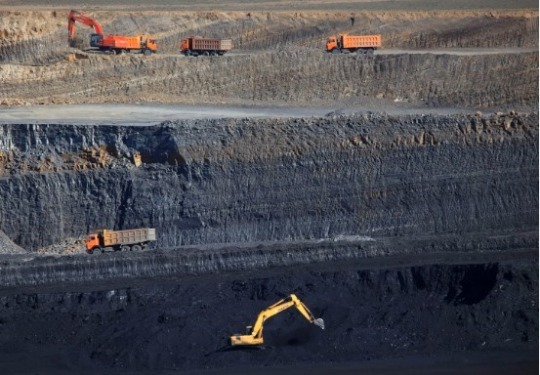
Introduction
Coal mining is a fundamental pillar of the global energy sector, supplying a significant portion of the world's energy needs. This article provides a comprehensive overview of the coal mining market, including its size, growth, challenges, and key players.
Understanding the Coal Mining Market
Coal mining involves the extraction of coal from underground or surface mines. It serves as a vital source of energy for electricity generation, industrial processes, and heating worldwide. Despite increasing concerns about environmental impacts, coal remains a prominent energy source, particularly in countries with abundant coal reserves.
Coal Mining Market Research Reports
Coal Mining Market research reports offer invaluable insights into the coal mining industry, providing detailed analyses of market trends, demand-supply dynamics, regulatory developments, and competitive landscapes. These reports aid industry stakeholders, investors, and policymakers in making informed decisions regarding investment, regulation, and strategic planning.
Coal Mining Market Share
The coal mining market is characterized by several major players dominating significant shares of the global market. According to recent data:
BHP Billiton accounts for approximately 7% of global coal production.
Anglo American holds a market share of around 6% in the global coal mining industry.
Glencore contributes approximately 5% of the world's coal production.
Peabody Energy is responsible for around 4% of global coal output.
Together, these companies and others collectively account for the majority of coal production worldwide, leveraging their extensive operations and infrastructure to meet global demand for coal.

Coal Mining Market Growth
Despite facing challenges such as environmental regulations and competition from alternative energy sources, the coal mining market continues to experience growth in certain regions. According to industry forecasts, the coal mining market is projected to grow at a compound annual growth rate (CAGR) of 2.8% from 2021 to 2026.
Coal Mining Market Size
The global coal mining market is sizable, with billions of tons of coal extracted annually to meet various energy and industrial needs. In 2021, the global coal production stood at approximately 7.4 billion metric tons, with significant contributions from countries like China, India, the United States, and Australia. The market size is expected to remain substantial in the foreseeable future, albeit with fluctuations influenced by market dynamics and regulatory changes.
Coal Mining Market Challenges
The coal mining industry faces several challenges, including:
Environmental Concerns: Coal mining operations have significant environmental impacts, including habitat destruction, water pollution, and greenhouse gas emissions. As governments and society increasingly prioritize environmental sustainability, coal mining companies must navigate stricter regulations and adopt cleaner technologies.
Market Volatility: The coal market is subject to price volatility influenced by factors such as geopolitical tensions, supply-demand dynamics, and shifts in energy policies. Fluctuating coal prices can impact the profitability of coal mining companies and deter investment in new projects.
Competition from Renewables: The rise of renewable energy sources, such as solar, wind, and hydroelectric power, poses a competitive challenge to the coal mining industry. As renewable technologies become more cost-effective and accessible, coal's share in the energy mix may decline, affecting coal demand and market dynamics.
Coal Mining Market in India
India is one of the largest coal-producing and consuming countries globally, with a significant portion of its energy derived from coal. According to recent statistics, India produced approximately 955 million metric tons of coal in 2020, making it the second-largest coal producer after China. Coal accounts for around 70% of India's electricity generation, highlighting its crucial role in the country's energy mix.
The Indian Coal Mining Market is characterized by large state-owned coal companies like Coal India Limited (CIL) and Singareni Collieries Company Limited (SCCL), as well as private players operating in the sector. Despite efforts to diversify the energy mix and promote renewable energy, coal continues to play a vital role in India's energy security and economic development.
Coal Mining Market Competitors
In addition to major players like BHP Billiton and Anglo American, the coal mining market features various competitors, including:
Shenhua Group (China)
China Coal Energy Company Limited
Yanzhou Coal Mining Company Limited (China)
Glencore plc (Switzerland)
Peabody Energy Corporation (USA)
Conclusion
The global coal mining market remains a significant component of the energy landscape, despite facing challenges and evolving market dynamics. As the world transitions towards cleaner energy sources, coal mining companies must adapt to changing demands, embrace sustainable practices, and innovate to remain competitive in a rapidly evolving industry.
#Coal Mining#Coal Mining Germany#Coal Mining India#Coal Mining Indonesia#Coal Mining Market#Coal Mining Industry#Coal Mining Companies#Global Coal Mining#Coal Mining Industry Reports#Coal Mining Market Growth#Coal Mining Market Size#Coal Mining Market Challenges#Coal Mining Market in India#Coal Mining Market Competitors#Coal Mining Market Outlook#Coal Mining Industry Research Reports#Coal Mining Market Research Reports#Coal Mining Market Major Players#Coal Mining Market Share
0 notes
Text
Exploring the Coal Mining Market Growth, Share, and Major Players
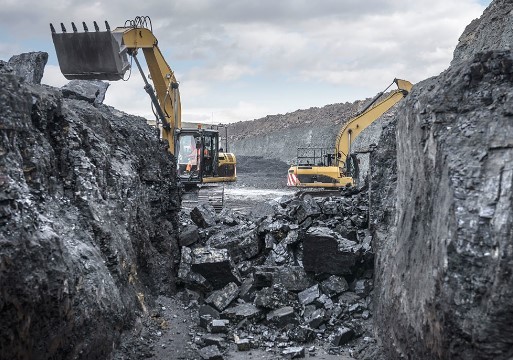
The Coal Mining Market stands as a fundamental pillar, providing the essential fuel for global energy production. This comprehensive exploration delves into the nuanced intricacies of the market, shedding light on its growth trajectories, size, demand dynamics, challenges, global presence, competitive landscape, forecasts, research reports, and the major players shaping the industry's trajectory.
Fueling Progress: The Growth Trajectory of Coal Mining Market
The market serves as an indispensable contributor to the world's energy demands. In understanding the growth trajectory, it's essential to dissect the factors propelling its expansion. The Global Coal Mining Market has experienced commendable growth, boasting a compound annual growth rate (CAGR) of 3% over the last five years. This sustained growth is attributable to the unwavering reliance on coal for electricity generation, particularly in emerging economies.
Regional Dynamics:
Regional disparities in growth patterns exist, with Asia-Pacific dominating the coal mining landscape. China, India, and Australia emerge as pivotal contributors, fueled by their burgeoning economies and significant coal reserves.
Sizing Up the Industry: Coal Mining Market Size and Demand
Understanding the market's size and the dynamics driving coal demand is imperative for stakeholders seeking holistic insights into the industry. The current valuation of the Global Coal Mining Market exceeds USD 695 billion, indicative of its substantial influence. The demand for coal surpasses 8 billion metric tons annually, driven primarily by the insatiable energy needs of industries and the power sector.
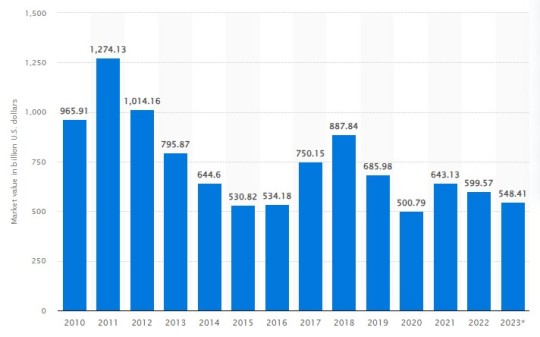
Click here – To Know more about this industry
Meeting Energy Needs: Exploring Coal Mining Market Demand
The demand for coal intricately aligns with global energy requirements, making it imperative to dissect the factors shaping demand and its pivotal role in meeting diverse energy needs.
Energy Generation Backbone:
Coal's significance in electricity generation remains pronounced, contributing to over 40% of the world's electricity. The reliable and consistent energy output from coal-fired power plants positions it as a critical contributor to the global energy mix.
Overcoming Hurdles: Coal Mining Market Challenges
Despite its integral role, the coal mining industry faces a myriad of challenges, ranging from environmental concerns to the shifting dynamics of the global market.
Environmental Concerns and Market Dynamics:
Stringent environmental regulations pose a substantial challenge, prompting the industry to pivot towards cleaner technologies and sustainable mining practices. The perpetual challenge lies in finding the delicate balance between meeting energy needs and environmental stewardship. The evolving landscape of the global energy market, with a growing emphasis on renewable sources, presents a challenge for the coal mining industry. Adapting to these market dynamics requires strategic foresight and innovative approaches.
Global Reach of the Global Coal Mining Market
The coal mining industry's influence extends far beyond national borders, necessitating an examination of the global landscape and the role of key players in shaping its dynamics.
Major Players and Market Competitors:
Leading companies, including Coal India Limited, China Shenhua Energy, and BHP Billiton, command the industry. Their strategic investments, technological advancements, and sustainable practices contribute significantly to their competitive positions on the global stage. The competition within the coal mining sector is fierce, with major players engaging in strategic maneuvers to secure resources and market dominance. Collaboration, innovation, and sustainability initiatives define their competitive strategies.
Forecasting the Future: Coal Mining Market Forecast
Anticipating future trends and trajectories is integral for strategic planning within the coal mining industry. Despite challenges and the growing emphasis on renewable energy, the coal mining market is forecasted to maintain a stable trajectory with a modest annual growth rate of 2%. The continued demand for coal in steel production and power generation contributes to this resilience.
Insights from the Earth: Coal Mining Market Research Reports
Informed decision-making within the industry relies on robust research, emphasizing the significance of Coal Mining Market Research Reports in providing actionable insights for stakeholders. An annual influx of 25 comprehensive research reports enriches the industry's knowledge base. These reports cover diverse aspects, including market dynamics, technological advancements, and regulatory changes, offering valuable guidance for strategic planning.
Pillars of the Industry
Certain players lead the way, steering the industry towards innovation and sustainability. Coal Mining Market Major players, such as Peabody Energy and Glencore, are pioneers in clean coal technologies and sustainability practices. Their efforts align with the industry's evolution towards more environmentally responsible mining, ensuring a balance between energy needs and environmental stewardship.
Conclusion
The Coal Mining Market remains a linchpin in global energy production, overcoming challenges and evolving to meet changing demands. As the industry navigates environmental concerns, explores cleaner technologies, and adapts to market dynamics, its steadfast role in powering economies underscores its enduring significance.
#Coal Mining Industry#Coal Mining Industry Reports#Coal Mining Market Growth#Coal Mining Market Size#Coal Mining Market#Coal Mining Market Demand#Coal Mining Market challenges#Coal Mining Market in India#Coal Mining Market value#Global Coal Mining Market#Coal Mining Market competitors#Coal mining market analysis#Coal Mining Market Forecast#Coal Mining Market outlook#Coal Mining Industry research reports#Coal Mining Market research reports#Coal Mining Market major players#Coal Mining Market Share
0 notes
Text
Human rights activists warn that Russia’s recent expansion of anti-LGBT legislation could also ban transgender people from numerous professions including childcare, nuclear power, water filtration, explosives, and a lot more
Russian Prime Minister Mikhail Mishustin signed the new restrictions on December 5, the same day as the anti-constitutional law banning LGBT “propaganda”. The corresponding order was published and entered into force on December 6. Until now, it has not come to the attention of activists. There have also been no reports of infringement of rights under the new rules. As human rights activists emphasize , the draft order is still “hanging” for voting on the portal of legal information , and the results of the examination on it have not been published.
What happened
The document in question establishes a list of medical psychiatric contraindications for certain types of professional activities. It is based on ICD-10 codes and includes only 7 items. Among them are schizophrenia, organic mental disorders, affective disorders (which include depression and bipolar disorder). Item 5 includes personality and behavioral disorders in adulthood F60-F69. Both F64 Gender Identity Disorders, the obsolete medical term for transgenderness, and F65 Paraphilias are in this range. The latter includes sadomasochism, exhibitionism, and pedophilia. The listing of these phenomena separated by commas is similar to the law on the prohibition of "Propaganda", where "non-traditional orientation" and "sex change" coexist with pedophilia.
The list of restrictions applies only to certain types of activities, the list of which was approved by the Ministry of Health back in May 2022 . It has 17 points - types of activities for which, according to the legislator, the mental state of employees is important. The documents do not separate which mental states for which activities become restrictions. This should be decided by the medical commission, where the employer should send the applicant. But if the commission refuses, its refusal can be valid for up to five years and it will be possible to cancel it only through the court.
The previous version of the list of psychiatric contraindications was adopted in 1993. It had a different structure: the same document listed both the types of activity and specific diagnoses for each, for which the medical commission could reject the candidate. T * people's careers did not suffer from it in any way. At the end of the 1990s, the list and also the procedure for holding a medical commission were included in the list of obsolete and redundant documents. In 2021, the replacement of the list was postponed for a year, and now it has finally been updated, changing the approach.
What professions are at risk?
Here is a list of activities for which medical commissions have the right to take into account the applicant's transgender status. We do not claim that this right will be implemented in practice, but a loophole exists:
transport management;
work in explosive materials;
nuclear power;
circulation of weapons;
emergency rescue and firefighting;
crane control;
water supply;
teaching and education in educational institutions;
care and supervision of children;
work with the state secret services;
technical work in the electric power industry;
technical work in the thermal power industry;
work with equipment under pressure;
dispatching in the chemical industry;
coal mining in mines;
operation and repair of wells, cleaning of oil tanks and ships;
work involving contact with infections.
It is important to say that these are activities, not specific professions. For example, work at a university or school may not be related to pedagogy. In the same professions and in the same positions in different places, tasks may differ, which means that activities can be added or subtracted. How much the career of T * people will suffer is difficult to predict in advance.
25 notes
·
View notes
Text
In the Pines/The Longest Train
So... About 2 months ago, I began looking into the history behind an Appalachian folk song "In the Pines." It's a rather... slow, moody, and creepy song that can easily be interpreted to represent dark topics such as depression, promiscuity, and some other topics relating to misery. Most often, what the song represents is tied to whatever variation you're listening to - which there are a lot of. Nirvana; Bill Monroe; Lead Belly; and so many more artists have created variations of this same song, In The Pines. It's quite amazing how many people have contributed to it over the years.
However... the person who first wrote or composed the song has been completely lost to history. History notes that it came from southern Appalachia in about the 1870's... but that is the extent of what we know.
That doesn't mean we're completely in the dark though! One of the variations of the song, The Longest Train, mentions a train going down "That Georgia Line" which some other variations replacing the line with "Joe Brown's coal mine". That obviously refers to Joseph E. Brown; Joseph was former confederate governor of Georgia infamous for leasing convicts out to coal mines in north Georgia. One of these mines - owned by him of course- was a mining town by the name of Cole City in Dade County. Why is this location important?
You'll see.
The Longest Train (or some early variations) goes on to mention a decapitation caused by a train in which "the body was never found". So... a coal mine back in the late 19th century obviously would have needed a lot of trains and mine carts running around to transport convicts and supplies and goods around. Also given that these were convicts - most likely African -you can imagine that those trains and mine carts weren't exactly ... safe, to put it lightly.
I dug a while between 19th century mining records and train accidents from around the same time. But... I couldn't find anything concrete. It was only when I started looking for articles about the Dade County Coal mines that I came across a blogpost made by dadecountycheerleeder1 in the Dade County Historical Society forums. It seemed to copy and paste a 2014 article; which, in turn, transcribed an 1886 article about the coal mines in the county. And OH BOY, were the trains dangerous. A mention is made of an incident in which a cable train broke and "there was not enough of the little cars left to make a decent toothpick." The 1886 article then goes on to say what the convicts do at the mines every day, as well as the story of a convicted killer working there.
Remember how The Longest Train mentioned a head getting decapitated by a train? Yeah... It's reasonable to assume that something like that actually happened at the mine; but it was never reported or written down. The convicts working at the coal mine might have also prompted some of the concerned parents living in the local town to warn their children to never go "in the pines... where the sun don't ever shine."
Of course, this is just my idea. And... it draws on a lot of circumstantial evidence. However, it's interesting to think that one of the only remnants of misery and feelings is a song that got passed down from generation to generation. History might have forever forgotten the names and faces of those attached to the creation of this song... they still live on through it's lyrics and medley.
Link to Dade County Historical Society blogpost: https://dchsga.wordpress.com/2018/02/25/hell-with-the-lid-off-dade-coal-mines-1886/
other sources used: https://en.wikipedia.org/wiki/In_the_Pines
https://www.nytimes.com/1994/11/13/arts/pop-music-a-simple-song-that-lives-beyond-time.html?pagewanted=1
https://georgia-exhibits.galileo.usg.edu/spotlight/convict-labor/feature/industrialization-of-the-new-south
http://daysgoneby.me/moving-in-a-covered-wagon/
#in the pines#rabbit hole#original research#appalachain mountains#coal mining#music#the longest train#education#history#culture
11 notes
·
View notes
Text
China: Carmakers Implicated in Uyghur Forced Labor
BYD, GM, Tesla, Toyota, VW Risk Using Tainted Aluminum
Global carmakers, including General Motors, Tesla, BYD, Toyota, and Volkswagen, are failing to minimize the risk of Uyghur forced labor being used in their aluminum supply chains, Human Rights Watch said in a report released today.
The 99-page report, “Asleep at the Wheel: Car Companies’ Complicity in Forced Labor in China,” finds that some carmakers have succumbed to Chinese government pressure to apply weaker human rights and responsible sourcing standards at their Chinese joint ventures than in their global operations, increasing the risk of exposure to forced labor in Xinjiang. Most have done too little to map their aluminum supply chains and identify links to forced labor.
“Car companies simply don’t know the extent of their links to forced labor in Xinjiang in their aluminum supply chains,” said Jim Wormington, senior researcher and advocate for corporate accountability at Human Rights Watch. “Consumers should know their cars might contain materials linked to forced labor or other abuses in Xinjiang.”
The link between Xinjiang, a region in northwestern China, the aluminum industry, and forced labor is the Chinese government-backed labor transfer programs, which coerce Uyghurs and other Turkic Muslims into jobs in Xinjiang and other regions.
Human Rights Watch reviewed online Chinese state media articles, company reports, and government statements and found credible evidence that aluminum producers in Xinjiang are participating in labor transfers. Human Rights Watch also uncovered evidence that fossil fuel companies that supply coal to aluminum producers in Xinjiang have received labor transfer workers at their coal mines. Xinjiang’s aluminum smelters depend on the region’s abundant and highly polluting coal supplies to fuel the energy-intensive process of aluminum production.
In 2023, domestic and foreign manufacturers in China produced and exported more cars than any other country. Since 2017, the Chinese government has committed crimes against humanity in Xinjiang, including arbitrary detention, enforced disappearances, and cultural and religious persecution, and has subjected Uyghurs and other Turkic Muslim communities to forced labor inside and outside Xinjiang.
2 notes
·
View notes
Text
Global Drilling Dynamics: A Comprehensive Overview of Directional Drilling Services Worldwide
Directional drilling is technique where multiple holes are dug from same surface. This form of digging is used by oil companies for accessing the reservoir of oil which saves the operational cost and done with less damage to the environment. The directional drilling has been a part of oil industry for a longer period. The use of Directional Drilling has economic uses as well for the oil drilling companies because it has low maintenance and low equipment cost which is why it is preferred mainly. With the rising demand for sources of energy, companies are investing huge amount into advanced methods for drilling services. Use of advanced tools and technique for the discovery for finding new reservoirs with minimum expense and drilling them to bring out maximum output. The market will be driven by increasing demand for energy, rapid industrialization.
Request The Sample PDF Of This Report: https://www.alliedmarketresearch.com/request-toc-and-sample/14171
COVID-19 Impact analysis
The COVID-19 outbreak has highly impacted the oil & gases market. With rise in cases day by day, countries have been under complete lockdown. This resulted in low sales of automobiles and halt in industries such as airlines, transportation, and oil production.
The companies have to follow the lockdown protocol and shut down their production unit as per government rules and regulation. Also, because of shortage of labor and including their safety. Many ongoing projects have to be temporarily ceased with immediate effect. The oil & gas price and supply have been affected globally.
Top Impacting Factors
The population is growing rapidly and so is the demand for energy. The demand is more from developing countries owing to increasing infrastructure and changing lifestyle of people. To cope with the demand, it has become important to discover new oil and gas fields, to meet the energy demand. Thus, the market has been expanding due to increasing investment. The fluctuating crude oil price in the global market oil field operators are cutting down their expenses in field operations. Also, the government is now strict on the oil & gas mining. In several regions, government has applied some rules and regulation regarding the safety of workers and environment. The companies have to submit a rough plan to the government about their drilling plans and environment safety measures which they are taking. Apart from this, the list of equipment to be used and an evacuation plan in case of emergency if anything happens. Before drilling to get the permissions can take time and slower down the production and increase in production cost, which is expected to hamper the directional drilling services market. The increase in adoption of green energy sources will reduce dependency on oil & gas in the future is expected to affect the directional drilling services market.
Market Trends
The growing investment in off-shore sector to find more reservoirs and increase the oil & gas production. This makes it the fastest growing segment into the market. Countries like China, America, and Russia have already invested, because the cost of offshore drilling has declined over the past few years.
Currently the demand for coal, gases and fuels for transportation has been increasing due to globalization and urbanization, which needs the expansion of oil & gas industry and biggest market vendors such as China, Russia and the U.S. have increased their investment in search for oil fields.
The increased use of energy has expanded the global oil & gas industry. They are mainly used for the purpose of transportation, power generation, and industrial use with many other industries.
Technological advancement which helps drillers to go into more depth and advancement of drilling tools with better visibility under the water, America is dominating the market because of their better technology.
Countries which are largest consumer of oil & gas are China and the U.S.; they are investing more into renewable source of energy power generation to reduce carbon emission and their dependency on fossil fuels. They are setting hydro, solar and wind power energy substation at a larger extent, which will affect the oil, gas and drilling market at a larger level.
Enquiry Before Buying : https://www.alliedmarketresearch.com/purchase-enquiry/14171
Key Benefits of the Report
This study presents the analytical depiction of the directional drilling services industry along with the current trends and future estimations to determine the imminent investment pockets.
The report presents information related to key drivers, restraints, and opportunities along with detailed analysis of the directional drilling services market share.
The current market is quantitatively analyzed to highlight the directional drilling services market growth scenario.
Porter’s five forces analysis illustrates the potency of buyers & suppliers in the market.
The report provides a detailed directio
Directional Drilling Services Market Report Highlights
Aspects & Details
By Drilling Technique
Conventional Methods
Rotary Steerable System
By Service Type
Rotary Steerable System (RSS) Logging-While-Drilling(LWD
Logging-While-Drilling(LWD
Measurement-While-Drilling (MWD)
Motors (MUD Motors)
Get a Customized Research Report @ : https://www.alliedmarketresearch.com/request-for-customization/14171
By Application
Onshore Applications
Offshore Applications
By Region
North America (U.S, Canada, Mexico)
Europe (Russia, France, Germany, Italy, Spain, UK, Rest of Europe)
Asia-Pacific (China, Japan, India, South Korea, Rest of Asia-Pacific)
LAMEA (Brazil, Saudi Arabia, South Africa, Rest of LAMEA)
Key Market Players
Weatherford International Plc, Jindal Drilling & Industries Limited., Schlumberger Limited, Baker Hughes Incorporated, Nabors Industries Ltd, Halliburton Company, Cathedral Energy Services Ltd, General Electric Oil & Gas, National Oilwell Varco
3 notes
·
View notes